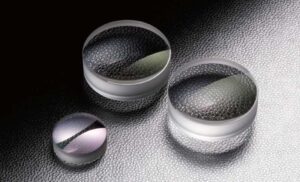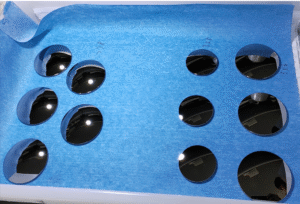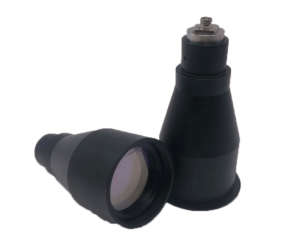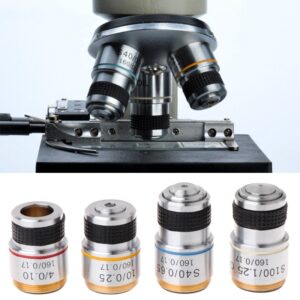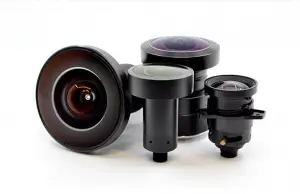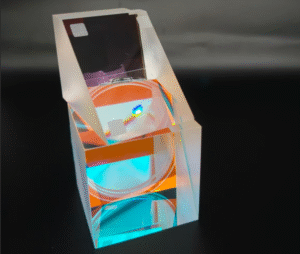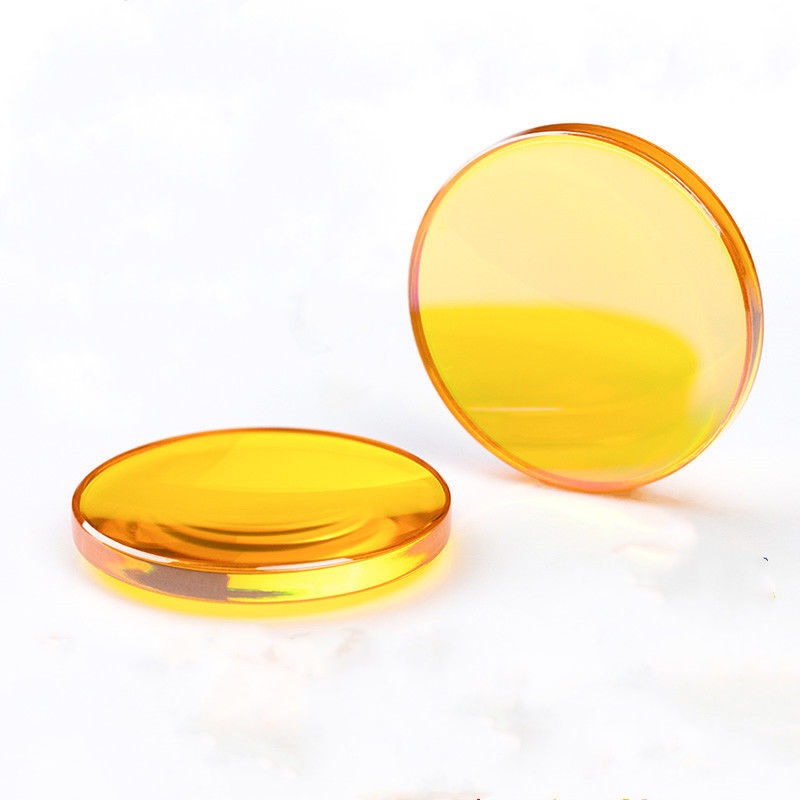CO2 Laser Lens Direction and Installation
Correct installation direction is crucial for optimal performance. Most CO2 lenses are asymmetric:
- Plano-Convex Lens: The convex side should face the incoming laser beam.
- Meniscus Lens: The concave side should face the laser source.
Installing the lens backward can cause increased beam divergence, energy loss, and reduced cut quality.
Installation Tips:
- Handle lenses with powder-free gloves.
- Avoid touching the lens surface.
- Secure lens mounts without over-tightening.
CO2 Laser Spot Size and Focus
The spot size depends on the lens focal length and beam diameter. A smaller spot size means higher energy concentration, ideal for fine engraving and thin material cutting.
| Focal Length | Spot Size | Application |
|---|---|---|
| 1.5″ (38.1 mm) | Very Small | Fine engraving, thin materials |
| 2″ (50.8 mm) | Small | General cutting and engraving |
| 2.5″ (63.5 mm) | Medium | Thicker materials, deeper cuts |
| 4″ (101.6 mm) | Larger | Very thick materials |
Laser Lens Focus:
Finding the correct focal point is essential. Most systems use a focus tool or manual adjustment until the beam spot is smallest and most intense.
Types of CO2 Laser Lenses
Different lens designs suit different applications:
- Plano-Convex Lens: Simple focusing, lower cost.
- Meniscus Lens: Reduced spherical aberration, higher precision.
- Compound Lens (Doublet Lens): Two-element design for improved beam quality, minimal aberrations, and longer service life.
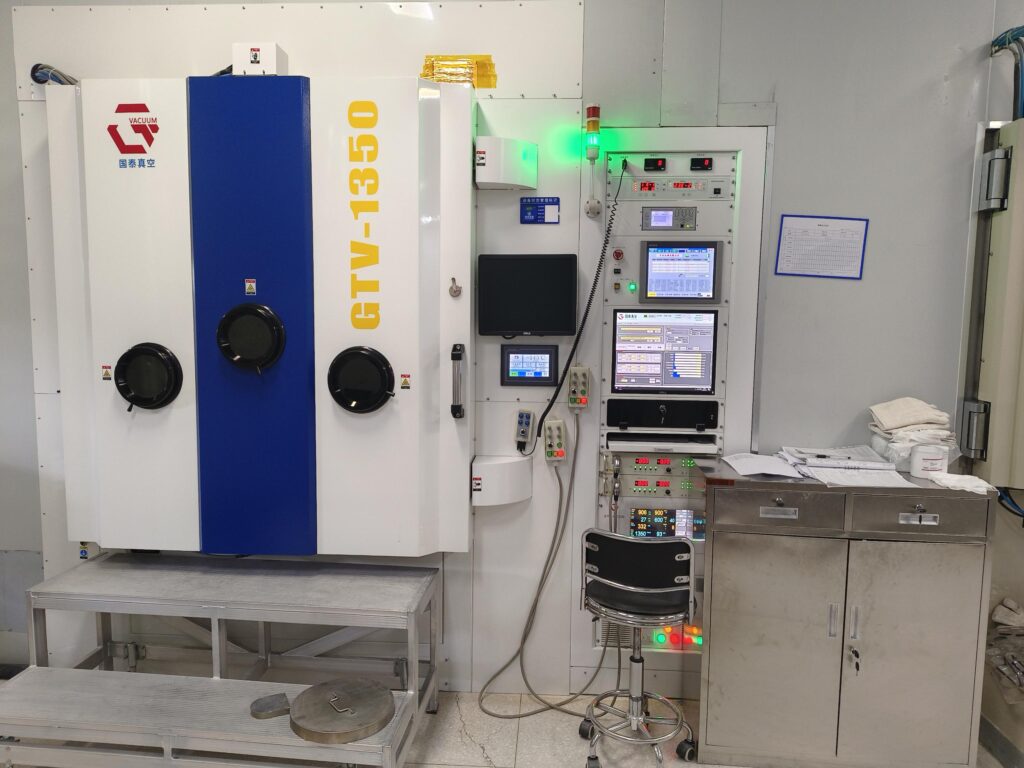
(Insert suggestion: Comparison image of plano-convex, meniscus, and compound lenses.)
CO2 Laser Lens Focal Length
Choosing the right focal length depends on your application:
- Short Focal Length (1.5″–2″): Best for fine detail and thin materials.
- Medium Focal Length (2.5″–3″): Balance between detail and depth.
- Long Focal Length (4″–5″): Suitable for cutting thicker materials or for applications where a longer working distance is needed.
CO2 Laser Lens Price
The price of a CO2 laser lens varies based on material quality, lens type, and coatings. Here is a general reference:
| Lens Type | Price Range (USD) |
|---|---|
| Standard Plano-Convex Lens | $30–$60 |
| Meniscus Lens | $50–$90 |
| Compound Lens (Doublet) | $80–$150 |
Custom coatings or high-durability options may cost more.
CO2 Laser Lens Cleaning and Maintenance
Proper cleaning ensures longer lens life and stable laser performance.
How to Clean a CO2 Laser Lens:
- Blow off loose particles with clean compressed air.
- Use lens tissue or cotton swab moistened with optical cleaner.
- Wipe gently from center to edge, never in circles.
- Avoid using harsh solvents or rough cloths.
Recommended CO2 Laser Lens Cleaners:
- Isopropyl Alcohol (≥99%)
- Acetone (high purity)
- Commercial optical cleaning solutions
Cleaning Frequency:
- After every few hours of heavy use
- Immediately if you notice cutting quality drop
CO2 Laser Lens Replacement
When to replace a CO2 laser lens?
- Visible scratches or pits
- Significant drop in cutting or engraving quality
- Burn marks that cannot be cleaned
- Frequent focus issues
Timely replacement avoids damage to your laser tube and maintains production efficiency.
(Insert suggestion: Step-by-step graphic showing how to replace a laser lens.)
Why Choose Our CO2 Laser Optics?
- High-Quality ZnSe Material: From trusted suppliers.
- Advanced Coatings: High transmission and durability.
- Custom Lens Options: Focal lengths, diameters, coatings.
- Fast Shipping: Stock for common models, custom rapid production.
Whether you need a single lens for your desktop CO2 laser cutter or bulk supply for industrial systems, [Your Company Name] is your trusted optics partner.
Get Your CO2 Laser Lenses Today!
Need reliable, high-performance CO2 laser lenses?
Contact us now for competitive quotes, custom solutions, and technical support tailored to your laser system needs.

